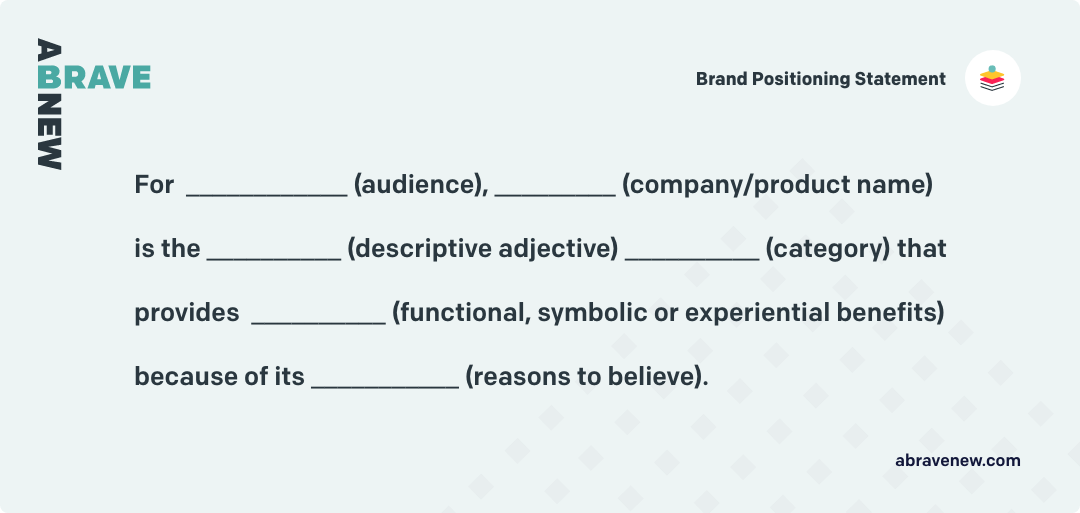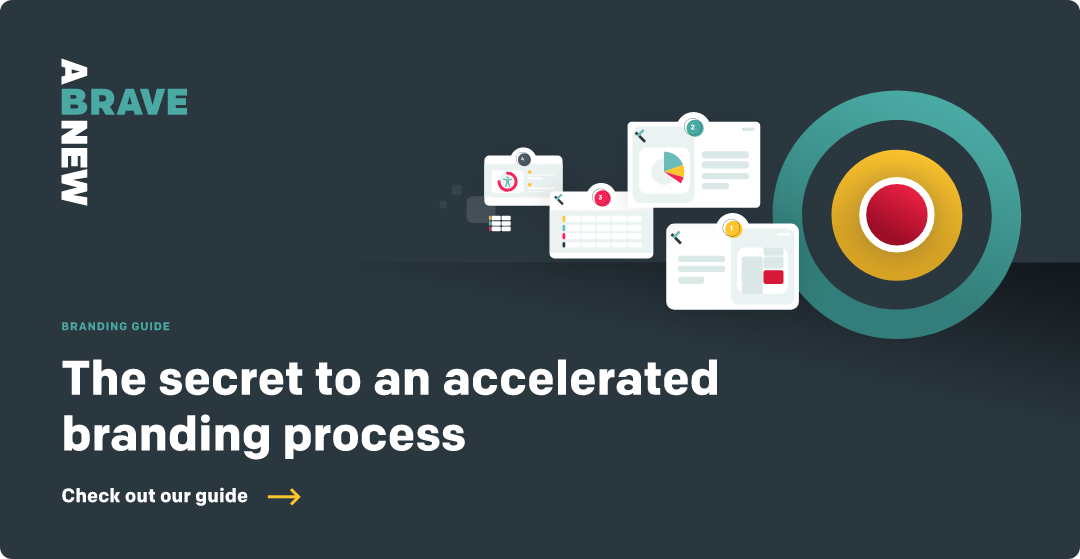A company is only as important as the memory it leaves in its customers’ minds. And each business must curate that memory diligently. That’s difficult to do if you aren’t clear on what that memory should be, which is where the brand drivers come in.
Brand drivers have their roots in the Integrated Branding method. We think of them in simple terms: Brand drivers are the building blocks at the center of your brand that define what makes you unique and memorable. Stated another way, while your mission and vision are what you do and what you are trying to accomplish, your brand drivers are the unique way that you accomplish your mission and vision.
In this series, we’ll be spending time unpacking each of the following brand drivers:
- Essence & promise
- Core attributes
- Brand positioning statement (this post)
- Personality
- Benefit ladder
- Decision-making filter
Today we’ll explore the brand positioning statement.
What is a brand positioning statement?
The brand positioning statement has its origins way back in the late 1960s when Jack Trout and Al Reis introduced the concepts of product positioning. While positioning was originally a marketing activity, today positioning statements are used to bring clarity at the brand level, both for products and companies.
A high-quality positioning statement brings together all of the moving pieces from your brand drivers and explains them in a single statement. Here’s the formula for the sentence:
This single statement allows you to clearly and concisely define the following:
- Who your brand’s core audience is
- How you want your brand to be thought of in the market
- What category you work in (whether it’s an established one or a new one you want your brand to create)
- The core benefits you provide
- The reason why someone should believe you can deliver on those benefits
At first glance, you may wonder how this positioning statement incorporates the other brand drivers, specifically the essence, promise, core attributes, and personality. Good question. Let’s take a look at each:
Essence: Because the essence is the unique idea at the core of your brand, it should influence every part of this statement.
Promise: The promise will likely inform the benefits that you provide and the reasons to believe.
Core attributes: Because core attributes are the way that you live out your essence, these should have a strong influence on the reasons to believe section and potentially the descriptive adjective you use in front of the category.
Personality: Personality should influence the words and phrases you choose to fill out this sentence.
One more important note on a brand positioning statement: it typically isn’t public. This is meant for internal use only to drive alignment.
Why does a brand positioning statement matter?
An organization’s brand drivers can be complex, with a lot of moving parts. Looking at each component individually, it can be challenging to understand how every piece fits together. That’s why the brand positioning statement exists.
The brand positioning statement clarifies whether there is alignment between all aspects of the brand drivers and helps us to think clearly about how they all come together to define a differentiated position that will win over other competitors in the marketplace.
But that’s not all. It also provides each and every employee in your organization with a simple and easy-to-understand statement that explains who your audience is and what you are all about. This will drive alignment across your entire team, marketing and communication efforts, and product development initiatives, etc.
Why is alignment important? Because repetition is needed to ensure that your customers begin to remember who you are, what you’re all about, and why you are unique. Getting your entire team on the same page with the positioning statement will ensure that your customers and prospects are hearing the same thing from everyone.
What are some examples of a brand positioning statement?
Ok, let’s make this real. To bring the brand positioning statement to life, I’ve chosen one brand from each of the industries that we work with (Tech and Healthcare) and drafted a positioning statement based on their external messaging. Keep in mind that this is done from the outside looking in, so I do not know if this is exactly how they would position themselves.
Before we show the statements, let’s remind ourselves of the formula we’re working from:

Ok, on to the examples.
Technology example: Productiv
 For companies seeking to strategically manage their SaaS spend (audience), Productiv (company/product name) is the only (descriptive adjective) spend management platform (category) that provides your teams the right solutions, for the right price, at the right time (functionality, symbolic, or experiential benefits) because of its integrations into your core operating system’s AI-infused data and no-code workflows (reasons to believe).
For companies seeking to strategically manage their SaaS spend (audience), Productiv (company/product name) is the only (descriptive adjective) spend management platform (category) that provides your teams the right solutions, for the right price, at the right time (functionality, symbolic, or experiential benefits) because of its integrations into your core operating system’s AI-infused data and no-code workflows (reasons to believe).B2B Healthcare example: OpenLoop
 For companies and clinicians seeking to provide digital health solutions (audience), OpenLoop (company/product name) is the premium white label (descriptive adjective) virtual care solution (category) that provides easy-to-implement and streamlined virtual care (functional, symbolic, or experiential benefits) because of its end-to-end telehealth platform with built-in privacy and compliance (reasons to believe).
For companies and clinicians seeking to provide digital health solutions (audience), OpenLoop (company/product name) is the premium white label (descriptive adjective) virtual care solution (category) that provides easy-to-implement and streamlined virtual care (functional, symbolic, or experiential benefits) because of its end-to-end telehealth platform with built-in privacy and compliance (reasons to believe).How to create your brand positioning statement?
The best way to start creating your brand positioning statement is to first spend some time working on the brand drivers. Then do the following:
Review your competitors’ positioning to understand what everyone is saying and where gaps may exist
Build consensus in your company about who your primary audience is
Draft the positioning statement
Pressure test it with stakeholders throughout your company
Try it on for size—start using it to guide your work, and see if it fits
Thanks for reading this third post on branding fundamentals. Read the next post in this series on brand personality here.
If you want to learn more about A Brave New’s approach to branding, check out our guide: The secret to an accelerated branding process.
Don’t miss out, get Brave News now
Join the ABN community and be the first to learn about trends in inbound marketing, branding, and web design.








